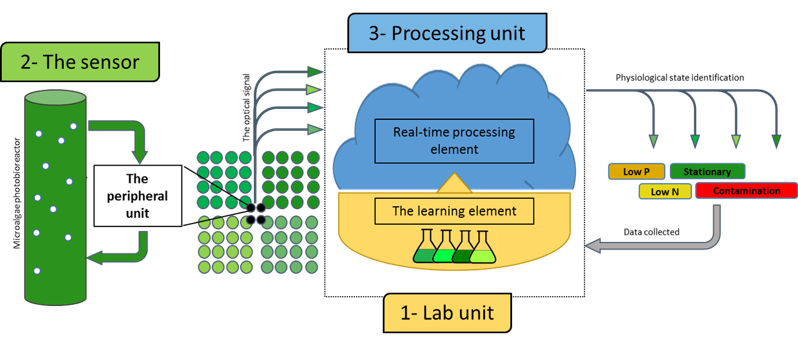Microalgae hold immense potential as sustainable sources of food, feed, and biofuels. However, growers often face frequent and unpredictable crop collapses caused by biotic and abiotic stresses. Current daily offline monitoring methods are slow and lack sufficient resolution, often failing to provide early warnings.This technology introduces real-time, online bio-optical monitoring that continuously evaluates algal physiological states using in situ optical sensors, enabling early stress detection and effective prevention of crop failure. Importantly, these monitoring devices are low-cost and can be tuned to the specific algae type.
- Monitoring of microalgae farming
- Aquaculture monitoring (fish, macroalgae, mollusks)
- Water quality monitoring
- Continuous, high-resolution monitoring
- Proactive rather than reactive cultivation management
- Cost-effective - reduces losses, lowers operational & production costs
- Increases stability and reproducibility in algae production

Schematic of the continuous bio-optical microalgae monitoring system
Prototype available; pending implementation in commercial algae farms.

Dr. Vered Pardo Yissar
